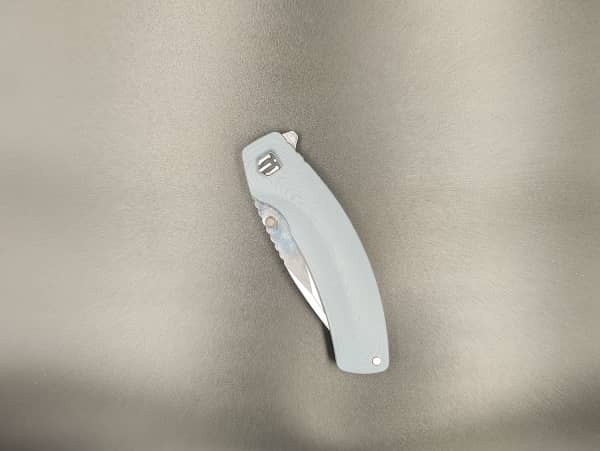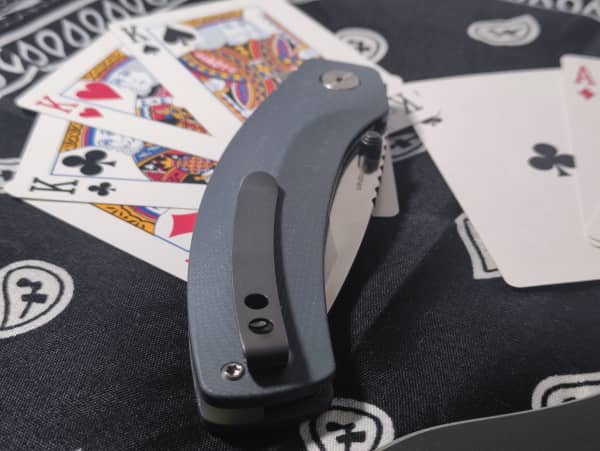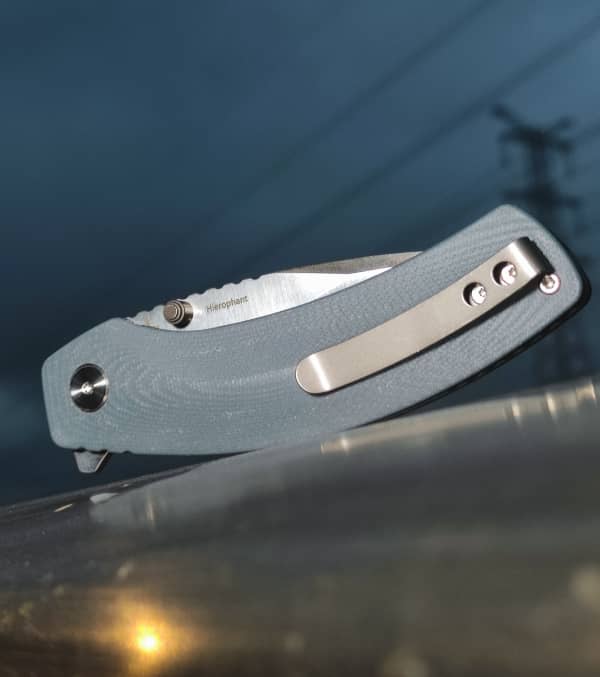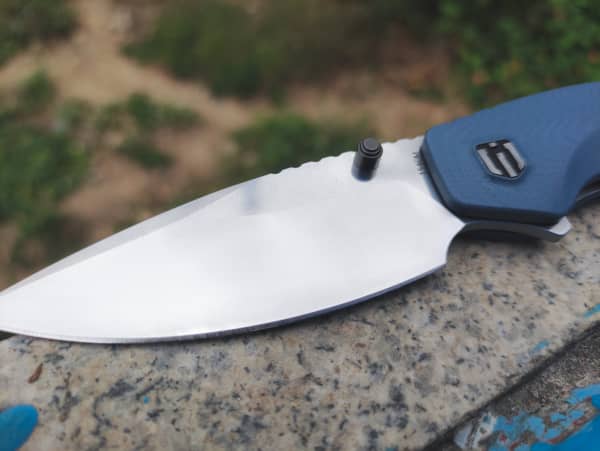Customizing an EDC knife is the perfect solution for those looking for a versatile and dependable everyday carry knife.
Not only does it allow you to choose a blade design and material that best suits your needs, but it also allows you to create something unique to fit your style.
From intricate designs carved into the handle or blade of your EDC knife to choosing durable materials like carbon steel or titanium for its construction – there’s no limit when customizing an EDC knife.
In this article, we’ll discuss the various aspects of designing and selecting materials for your customized EDC knife so that you can make sure you get exactly what you need out of yours!
Advantages of Blade Design
1. Versatility and Functionality
The advantage of customizing the blade design of your EDC knife is that you get the chance to choose a design that suits your specific needs.
There is no one-size-fits-all solution when it comes to blade design, as different types of blades perform best in different situations.
For example, a drop point blade is excellent for general-purpose uses such as slicing, piercing, and cutting. However, a tanto blade is perfect for tactical situations since it has a strong tip that can pierce through thick materials.
So, by customizing the blade design of your EDC knife, you can ensure that it meets your unique requirements
2. Aesthetics and Personalization
Another advantage of customizing your blade design is the ability to personalize and make it unique.
Customizing the blade design allows you to put your personal flair into the knife’s creation, whether it is through an intricate design etched onto the blade or adding your favorite colors to the knife’s handle.
This personal touch means that your EDC knife becomes more than just a tool; it becomes an extension of yourself that reflects your personality and style.
3. Blade performance and Edge Retention
The right blade design can make a considerable difference in the knife’s overall performance, with different blade shapes and grinds offering varying levels of effectiveness in different cutting tasks.
Customizing the blade design allows you to select a blade profile that performs exceptionally well in tasks that you perform most frequently.
Blade design also affects the edge retention of your knife. For instance, a hollow grind blade can get a razor-sharp edge, but the sharpness can dull more quickly than a flat grind blade.
By choosing the right blade design through customization, you can ensure the knife is excellent in performance while maintaining its sharpness for longer periods.
4. Ergonomics and Comfort
Customizing the blade design can also directly impact the knife’s ergonomics and comfort level.
A properly shaped blade can improve the knife’s balance point and give you a better grip, making it more comfortable to use for longer periods.
For example, a clip-point or spear-point blade shape allows for a more ergonomic grip, making it easier to perform precision tasks or to work for long periods without hand fatigue.
Customization of blade design ensures that the knife’s shapes and contours match your hand’s curves and the task you need to perform efficiently.
In conclusion, customizing the blade design of your EDC knife provides numerous benefits that directly impact its functionality, aesthetics, personalization, and comfort level.
Disadvantages of Blade Design
1. Cost of Customization
One disadvantage of customizing the blade design of your EDC knife is the cost. Customization can be a costly process, especially if you require intricate or complex designs on the blade or handle.
The material selection for your knife could also become a significant cost factor. Materials like carbon steel or titanium are excellent for knife blades, but they can be costly.
The more customized features you choose, the higher the cost of the knife. You should expect to pay a premium price for a custom-made EDC knife that matches your unique specifications.
2. Limitation of Purpose
A custom blade design for your EDC knife can significantly improve its functionality for specific tasks.
However, the drawback is that the knife’s design may only be suitable for certain purposes, while it may not be very efficient for other uses.
For instance, a blade with serrated edges is excellent for sawing through tough materials, but it may not be useful for chopping.
The design of the blade limits the knife’s versatility, and you may need multiple knives with varying designs to cover all your needs.
3. Time for Customization
Another disadvantage of customizing the blade design is the time taken to create the knife.
A high-quality EDC knife requires precision and attention to detail in its design and construction.
Customizing the blade design can take more time than purchasing a pre-existing knife, causing delays in its availability.
Custom knife makers take pride in creating high-quality knives, and the time it takes to create a custom knife may vary based on orders and the complexity of the design.
What is the most expensive Blade Design?
The most expensive knife on record is the Gem of the Orient with a price of $2.1 million.
This is a valuable knife created by the late Buster Warenski, an esteemed American custom knife-maker from Kimberley Nevada.
The Gem Of The Orient, crafted by one of the finest knife-makers of our era, features a jade handle adorned with intricate filigree, as well as a total of 153 emeralds (10 karats) and 9 diamonds (5 karats).
Apart from the Gem of the Orient, one of the most expensive blades to ever exist according to Oishya is the Gentak Makara Knife – Price: $12,500.
William Henry has created another impressive item called The Gentak Makara, which exhibits a beautiful handle that is hand-engraved and has 24-karat gold inlays.
The handle of the Gentak Makara has stunning hand engravings and includes 24-karat gold inlays. The blade is made of hand-forged ‘Hornets Nest’ Damascus and has a one-hand button lock system.
Additionally, it features a thumb stud set with spinels. This knife is a valuable addition to any collection, with the potential to become an heirloom passed down for generations.
The Makara knife is both unique and beautifully crafted, embodying a perfect blend of elegance, functionality, artistry, and exotic materials.
If you’re looking for a knife that’s practical, functional, and durable, I recommend getting one with a 154CM blade. This type of stainless steel was developed and produced in the US by Crucible Materials Corporation, now known as Crucible Industries.
It’s actually a modified version of martensitic stainless steel type 440C that has been enhanced with the addition of molybdenum.
The 154 CM steel is a modified version of the 440C martensitic stainless steel. It has been enhanced with the addition of molybdenum, which improves its overall performance and resistance to wear and corrosion.
This type of steel has a high level of wear resistance and retains its sharpness exceptionally well, making it perfect for use in EDC knives.
Moreover, it has a good balance of toughness, corrosion resistance, and edge retention, which makes it popular among knife enthusiasts.
The 154CM blade is easy to sharpen and maintain, and it has been known to maintain its sharpness even under heavy use. It is also tough enough to handle high-impact tasks, such as chopping wood or breaking glass.
Additionally, the 154CM blade is resistant to rust and staining, making it ideal for use in wet or humid environments. It is also less brittle than other types of stainless steel, reducing the risk of the blade breaking or chipping.
How to Choose Blade Design and Blade Material?
Choosing the right blade design and material for your EDC knife is crucial in ensuring its efficiency and durability.
Here are some factors that you should consider before making a purchase:
1. Your Intended Use
The first thing to consider when choosing a blade design and material is to determine the tasks and situations where you plan to use your EDC knife.
If you are planning to use your knife for light tasks like opening letters or cutting fruits, then a folding knife with a small blade may suffice.
On the other hand, if you plan to use your knife in demanding situations like camping or survival, then you need a larger blade that can withstand heavy use.
2. Blade Design
Blade design affects the performance and functionality of your EDC knife. Different blade designs have specific purposes and advantages, which can affect the knife’s cutting efficiency and handling.
For instance, a drop-point blade design where the blade’s spine and edge curve at the tip of the blade offers versatility and ease of use, making it a popular choice for hunting and survival knives.
Meanwhile, a tanto blade design where the blade has two angles forming a point offers excellent piercing capability, which makes it ideal for tactical knives.
It’s worth noting that blade design is a personal preference. Therefore, choose the blade design that works best for your intended purpose and preference.
3. Blade Material
The blade material is also an essential factor since it affects the knife’s overall performance, durability, and maintenance.
a. Stainless Steel
Most EDC knives are made of stainless steel. It’s a popular choice since it’s resistant to rust and corrosion, requires minimal maintenance, and is easy to sharpen.
One example is 154CM steel, a modified version of 440C martensitic stainless steel that has a high level of wear resistance and edge retention, making it an ideal blade material for EDC knives.
b. Carbon Steel
While carbon steel is less common in EDC knives, it has advantages such as superior sharpness and toughness.
It requires more maintenance to prevent rust and staining, but it holds an edge longer than stainless steel.
c. Ceramic
Ceramic blade materials are quite rare in EDC knives, but they offer the advantage of superb sharpness and durability.
They are also lightweight and resistant to rust and corrosion.
In summary, selecting the right blade design and material for your EDC knife depends on your intended use, blade design preference, and required maintenance.
By considering these factors, you can find an EDC knife that suits your needs and ensures its efficiency and longevity.
Shieldon – Your Trusted OEM Knife Manufacturer
Shieldon is a trusted OEM knife manufacturer that offers professional services to its clients. With extensive experience in the industry, Shieldon provides high-quality EDC knives that meet the specific needs of its customers.
Shieldon’s professional service ensures that all of its products are made with precision and attention to detail. Their team of skilled craftsmen is dedicated to delivering exceptional knives that are tailored to their client’s specifications.
Apart from providing custom designs, Shieldon also offers a wide range of finishing options that include laser engraving, sandblasting, and electroplating.
This allows their clients to create personalized knives that reflect their brand or personal style.
Moreover, Shieldon’s commitment to quality is evident in its use of premium materials.
They source high-grade stainless steel and other materials to ensure that their knives are durable, corrosion-resistant, and easy to maintain.
Shieldon’s professional service is a testament to its expertise and commitment to providing its customers with top-of-the-line EDC knives that exceed expectations. Contact us today!
Нажмите, чтобы получить больше Shieldon Фабрика ножей EDC..








